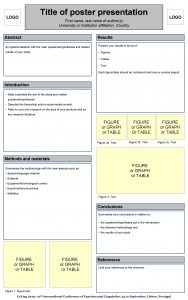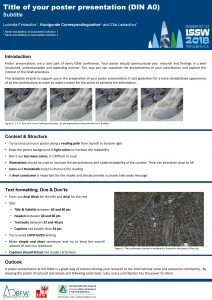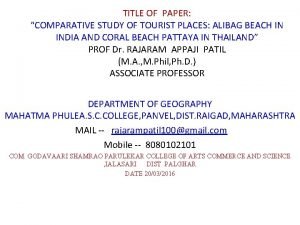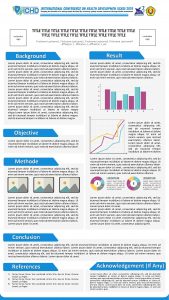The contents of presentation TITLE THE STUDY OF








![Eryngium campestre L. var. virens Link [2] Eryngium campestre L. var. virens Link [2]](https://slidetodoc.com/presentation_image/917ef64d34b6c36d0b9cb74441bdc84f/image-9.jpg)
![Echinophora tournefortii Jaub. &Spach [2], Echinophora tournefortii Jaub. &Spach [2],](https://slidetodoc.com/presentation_image/917ef64d34b6c36d0b9cb74441bdc84f/image-10.jpg)
![Reseda lutea L. var. lutea [2], Reseda lutea L. var. lutea [2],](https://slidetodoc.com/presentation_image/917ef64d34b6c36d0b9cb74441bdc84f/image-11.jpg)
![Sideritis gulendamiae H. Duman&Karavel [1] Sideritis gulendamiae H. Duman&Karavel [1]](https://slidetodoc.com/presentation_image/917ef64d34b6c36d0b9cb74441bdc84f/image-12.jpg)















- Slides: 27

The contents of presentation TITLE : THE STUDY OF FLORISTIC DIVERSITY IN THE LAKE OHRID ECOSYSTEM OBJECTIVES : • Evaluation of situation vegetation in area of Lake Ohri Ecosystem • THE STUDY OF FLORISTIC BIODIVERSITY

• Introduction Albania is a Mediterranean country on the Balkan Peninsula in the south of Europe. The climate of Albania is diverse. It has four major climatic zones and more sub-zones, which contribute to the country’s rich biological diversity. The lake of Pogradec or Ohrid, is characterized by the qualities of a small ecosystem, with water nature which is located in the north east of Albania. Ohrid lake is located in a height of 695 m and is surrounded by mountains that exceed 2000 m; it has a long waterside 87. 5 km and a surface of about 358 km 2. The average depth of the lake is 1 67 m, while the maximal depth reaches 289 m about two thirds of the lake are in Macedonia and one third in Albania. The study was realized during the period 2007 - 2008 along the area of Tushemisht, area with a similarity of biodiversity and in the area of St Naum in the administrative part of Macedonia.

The ecosystem of Ohrid Lake is one of the most important areas in Albania and Macedonia because of the variety of diversity, floristic diversity and variations of cultivating plants. Many spaces of Ohrid ecosystem have a national and international protection. The study: ” The study of floristic diversity on the Lake Ohrid ecosystem” realized in the two points of study Tushemisht and St Naum realized on 2007 year. In the Albanian and Macedonian part of the Lake were found one after the other, six areas of vegetation: a. the area of Charts spp. , b. the area of Potamogeton spp. , c. the area of Phragmites australis or the group of rods, d. the area where prevail floaty kinds of leaves, e. marsh areas f. the area of woods (up to 1000 m). In many places the highest density is noticed in the classes Phragmitetea (close to the waterside) and Charetea (from 5 -20 m of depth). In the Albanian and Macedonian part of the lake, is developed the part of rods . The founding of a monitoring system for taking the measures, in order to notice the changes in vegetation. Preservation of the equilibrium between the natural ecosystem and the agroecosystem. Based on the height of the area, they may be divided in: oak forest termofil with wide leaves, where the oak prevails, and Quercus frainetto, associated regularly with Acer inonspessulanum, A. platanoides, Fraxinus ornus in the lowest and warmest parts of oak forests.

Located Albania 42 o 39’ E Area total: 28, 750 sq km land: 27, 400 sq km water: 1, 350 sq km Albania is located on the western part of the Balkan Peninsula, between 39 38’ and 42 39’ latitude and between 19 16’ and 21 4’ longitude 21 o 4’ E Elevation extremes lowest point: Adriatic Sea 0 m highest point: Maja e Korabit 2, 753 m Map of Albania

Located Macedonia Total area (km 2) 25. 713 Population 2. 022. 547 Land (km 2) Water (km 2) 24. 856 477 Agricultural land (ha) 1. 260. 000 Forests (ha) 948. 000 Pastures (ha) 704. 000

The ecosystem of Ohrid Lake is one of the most important areas in Albania because of the variety of diversity, floristic diversity and variations of cultivating plants. Many spaces of Ohri ecosystem have a national and international protection. Fig. 1. Map of lake ecosystem Ohrid Topography

Material and Methods The methodology used is based on: Observation Method, key method for the determination of flora, and the comparative method (Instituto Per L’Oltre Mare, 2002). The classical method of research work in the ground is used based on the size of parcels along the lake area. The size of the measured parcel has been determined through the method of “ minimum surface”, while the placement of the tract is identified along the segment based on the method “Marshrut” (where each of these indicates the changes in vegetation). In these tracts, have been analyzed two different levels of biodiversity: a) Ecological diversity (ecosystems, plant associations, habitats, landshafs) and b) dominant types and families. The analysis includes the identification of the biological specter based on the biological elements (categorization of Raunkier) and chorological elements that belong to the origin of species.

RESULTS • Vegetation in a distance of 1000 m from the waterside of the lake. • They are rare in the spaces of Drilon and St. Naun, characterized by the plants Aichemilla alpina, Achillea airata and greens Festuca sp. , Stipapulcherrima, Nardus stricta, Anthoxanthum odoratun. • In the rocky areas are found the species Sagina saginoides, Geranium subcauescens and Viola gradis. • In the meadows of biotopes with humidity, where water sources flow, is developed a vegetation with a high degree of greenness with main components the species: Cirsiun paustre, Cardamine rapanfolia, Veratrum album, Adenostyes alliariae and Epilobium montanum.
![Eryngium campestre L var virens Link 2 Eryngium campestre L. var. virens Link [2]](https://slidetodoc.com/presentation_image/917ef64d34b6c36d0b9cb74441bdc84f/image-9.jpg)
Eryngium campestre L. var. virens Link [2]
![Echinophora tournefortii Jaub Spach 2 Echinophora tournefortii Jaub. &Spach [2],](https://slidetodoc.com/presentation_image/917ef64d34b6c36d0b9cb74441bdc84f/image-10.jpg)
Echinophora tournefortii Jaub. &Spach [2],
![Reseda lutea L var lutea 2 Reseda lutea L. var. lutea [2],](https://slidetodoc.com/presentation_image/917ef64d34b6c36d0b9cb74441bdc84f/image-11.jpg)
Reseda lutea L. var. lutea [2],
![Sideritis gulendamiae H DumanKaravel 1 Sideritis gulendamiae H. Duman&Karavel [1]](https://slidetodoc.com/presentation_image/917ef64d34b6c36d0b9cb74441bdc84f/image-12.jpg)
Sideritis gulendamiae H. Duman&Karavel [1]

Rare vegetation in the rocky parts of the area of Tushemisht and St Naumi is evaluated for : • • • • • Primula vulgaris, Urtica diotica Teucrium chamaedrys, Matricaria chamomila Hypericum pet-formalism, Papaver rhoeas Achillea millefolium, Rubus ulmfblins Melissa officinalis, Viola odorata Genriana mica, Rubus ideaus Sideritis roeseri, Malva sylvestris Juniperus oxycedrus, Mentha aquatica Juniperus communis, Crataegus monogyna Valeriana officinalis, Origanum vulgore Salvia offleinalis, Thymus serpyllium Vat-alt-urn album, Agrirnonia eupatoria Sambucus nigra, Arctium lappa Trfo 1 ium alpeslre, Atropa bellodona Rosa canina, Ceterach officinarum Tussilago farfara, Dryopteris Jllix-mas Satureja montana, Colchicum auturnnale (The names based on LINNAEUS, 1758).

Sideritis trojana Primula vulgaris

Tab. 1. Vegetations on Tushemishtit and Shen Naum (2007 -2008) Tabela 1: Vegetatia in Tushemisht si St Naum (2007 -2008) Sources: Investigated area 2007 -2008, LINNAEUS, 1758. Sursa: zona analizata 20072008, LINNAEUS, 1758. Latin Name Quercus sp. Quercus cerris Carpinus orientalis Fraxinus exelsior Corrylus avellana Malus silvestris Querrcus robur Prunus Spinoza Prunus cerasifera Ficus carica Sorbus acuparis Platanus orientalis Ulmus foliacea Populus nigra Pinus silvestris Pinus nigra Carpinus orientalis Cornus mas Crataegus monogyma Rosa Canina Rubus Ulmifolius Vitis sylvestris Hedera helix Latin Name Clematis flamula, vitalba Origanum vulgari Equisetum arvense Juncus maritima Tuslygo farfara Dectylis glomurata Festuca Pratensis Lolium perene, multiflora Lilium Gladiolus sp. Viola odorata, sylvestris Viola Bellis Hellebomus odorus Cynodon dactylon Raphamus raphanistrum Ranunculus arvensis Urtica dioica Pteridium aquilimus Funaria hyprometrica Licken Fungi Medicago sp.









CONCLUSIONS The ecosystem of Ohrid Lake is one of the most important areas in Albania because of the variety of diversity, floristic diversity and variations of cultivating plants. Many spaces of Ohri ecosystem have a national and international protection. From the data, results and their discus we have conclusions below: • The vegetation, the area ecology Lake of Ohrid have particular important and there are plant diversity, nature vegetation and plant cultivations, plant herbs and trees. • The unit area Albanian the biodiversity has small index, that for used of area construction around Lake Ohri. • The unit area Macedonia the biodiversity has high index that for used area with standard environmental.

• In some habitats of Lake Ecosystem of Ohri have added plant of water, this show more eutrofication with organic mater. • The ecosystem oh Ohrid is in the same at biodiversity and condition study Albanian - Macedonia on the future. • For one sonstenible biodiversity look for action on quality urban environment, in arrowed area of Lake Ohrid on part’s Albania and Macedonia. • preparation of region monitoring program with precise definition of what, where and when is to be installed; • To collaboration and cooperation with scientific institutions in Albania and Macedonia

References • Hodo, P. &Dinga, L. (2000): Vegetation of Albania in Guide to Albanian Natural Treasures, p. 167 • Soils. Instituto Per L’Oltre Mare (IAO). , (2002): Land Evaluation of Lebna Catchments, Tunisia, IAO, Florence, Italy. • Mankolli H, (2006): Soils resoursces in the ecoclimatic area of Prespa-Albania, AJNTS, published by Academy of Sciences of Albania. , (1 -2) XI (19 -20), p. 266 -273. • Mankolli H, (2007): I Symposium for protection of natural lakes “Towards a set of bio-indicators and eco-areas management at the Prespa watershed in Albania”, in Republic of Macedonia, Ohrid, p. 59 -60, 31. 05 - 03. 06. • Mersinllari M , (1997): “General data on vegetation of Ohrid and Prespa watershet area”, 125 -135. • Nature. , (1997): Landscape and Biodiversity Conservation in Albania p. 39 Tirana. REC. • Natura 2000. , (2007): Newsletter on Biodiversity and Climate Change.

BALWOIS 2010, Ohrid, Republic of Macedonia, 25 to 29 May 2010 THANK YOU VERY MUCH FOR ATTENTION HYSEN MANKOLLI 1, NATALIJA ACESKA 2, SVETLANA PETROVSKA 3 1* Department of Agro-Environment and Ecology, Agricultural University of Tirana, Albania 2*Executive director NGO Knowledge harvest, Prilep, Macedonia 3 Executive director NGO Ce. Pro. SARD, Scopje, Macedonia
 Table of contents case study
Table of contents case study Prefatory elements in proposal exclude
Prefatory elements in proposal exclude Title title
Title title Poster presentation title
Poster presentation title Insert the sub title of your presentation
Insert the sub title of your presentation This is your presentation title
This is your presentation title This is your presentation title
This is your presentation title Poster presentation title
Poster presentation title Din a 0
Din a 0 Transition headline
Transition headline Title of presenter
Title of presenter This is your presentation title
This is your presentation title Copydroid
Copydroid Catchy project title
Catchy project title Writing thesis and dissertation proposals
Writing thesis and dissertation proposals Comparative study title
Comparative study title Diameters of fetal head
Diameters of fetal head Cephalic presentation
Cephalic presentation Yelp case study analysis
Yelp case study analysis Private equity lbo case study
Private equity lbo case study Yelp vision statement
Yelp vision statement Case study conclusion
Case study conclusion Evaluation criteria for case study presentation
Evaluation criteria for case study presentation Creek 2003 occupational therapy process
Creek 2003 occupational therapy process What is case series
What is case series Retrospective cohort study
Retrospective cohort study Process of method study
Process of method study Marty lobdell study less study smart
Marty lobdell study less study smart



















































